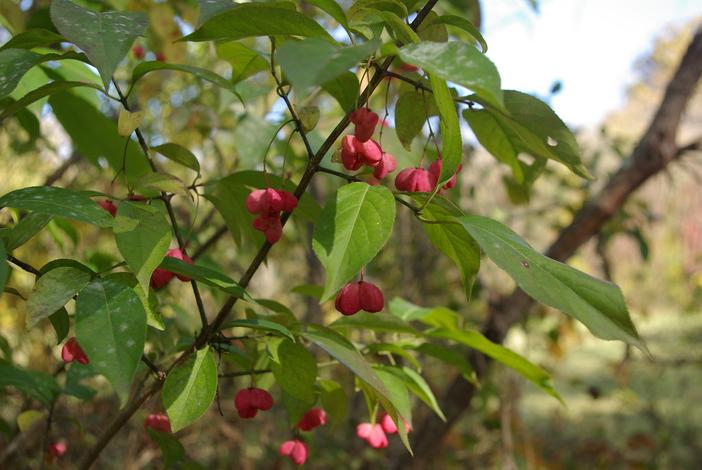Eastern Wahoo
(Euonymus atropurpureus)
Eastern Wahoo (Euonymus atropurpureus)
/
/

Pam Morgan
CC0 1.0
























































Estimated Native Range
Summary
Eastern Wahoo is valued for its vibrant fall color and unique fruit capsules, which add visual interest to the landscape. It is used in naturalized plantings, as a specimen plant, or in shrub borders. It adapts well to a range of soil conditions but prefers moist, well-drained soils. While it thrives in full sun or part shade, it requires medium water. Gardeners should be aware that the fruit is poisonous to humans and that the plant can spread aggressively in some areas, potentially becoming invasive. It is also susceptible to scale insects and anthracnose. Despite these issues, its ease of maintenance and autumn display make it a popular choice for gardeners.CC BY-SA 4.0
Plant Description
- Plant Type: Tree, Shrub
- Height: 12-20 feet
- Width: 15-25 feet
- Growth Rate: Moderate
- Flower Color: N/A
- Flowering Season: Summer
- Leaf Retention: Deciduous
Growth Requirements
- Sun: Full Sun, Part Shade
- Water: Medium
- Drainage: Medium
Common Uses
Bee Garden, Bird Garden, Drought Tolerant, Low Maintenance, Rabbit Resistant
Natural Habitat
Native to rich woods, thickets, and stream banks in Eastern and Central North America
Other Names
Common Names: Eastern Wahoo, Hearts Bursting With Love, Burning-Bush Euonymus, Eastern Burningbush, Eastern Burningbush, American Wahoo, Fusain De L’Est, Fusain Pourpre
Scientific Names: , Euonymus atropurpureus, Euonymus atropurpureus var. atropurpureus, Euonymus latifolius, Euonymus atropurpurea var. atropurpurea, Euonymus atropurpureus var. cheatumis, Euonymus atropurpureus var. grandifolius, Euonymus atropurpureus var. latifolius, Euonymus atropurpureus var. oblongifolius, Euonymus carolinensis
GBIF Accepted Name: Euonymus atropurpureus Jacq.